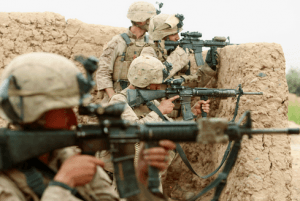There are fewer armed conflicts in the world today but more deaths – Report
 Although the number of armed conflicts worldwide fell from 63 in 2008 to 42 in 2014, the number of fatalities rose by almost 300 per cent over the same period, according to the Armed Conflict Survey 2015 released by the International Institute for Strategic Studies (IISS).
Although the number of armed conflicts worldwide fell from 63 in 2008 to 42 in 2014, the number of fatalities rose by almost 300 per cent over the same period, according to the Armed Conflict Survey 2015 released by the International Institute for Strategic Studies (IISS).
There were 56,000 fatalities in 2008, but six years later the figure had risen to 180,000, highlighting the intensity of violence associated with these conflicts.
Nigel Inkster, Director of Transnational Threats and Political Risk at the IISS, noted: “…the impact of conflict cannot simply be judged by the number of fatalities and injuries to which it gives rise.
“The conflicts being covered are generating ever higher levels of refugees and IDPs [Internally Displaced Persons], leading the UN High Commissioner for Refugees to observe that 2013 was the first year since the end of the Second World War when the global number of displaced persons had exceeded 30 million.
“It is civilian populations that continue to pay the price of conflicts both in terms of short-term dislocation but also in respect of longer-term impacts resulting from the collapse of government services, in particular education and healthcare, and economic development opportunities foregone, blighting the prospects of future generations.
“The World Bank has estimated that 1.5 billion people, roughly one-fifth of humanity, are affected by some form of violence.”
The conflicts in Central African Republic, the Democratic Republic of Congo, Libya, Nigeria, Somalia and South Sudan were highlighted in the Survey.
Mr Inkster, the editor of the Survey, pointed out that these conflicts and the others around the world were mainly “characterised by poor levels of economic development and weak institutions of governance”.
He added: “The drivers of conflict are a complex mix of the local, national and transnational. Ideology plays a significant role but so too does organised criminality either as a cause or as a significant by-product of conflict.
“And while the drivers for the majority of the conflicts covered are internal, some are a function of a wider regional geo-political contention. And now with the crisis in Ukraine the threat of state-on-state conflict is re-emerging.”
The Survey, a new product of the IISS, is based partly on material accumulated throughout the year in the organisation’s Armed Conflict Database, which has since 2003 monitored armed conflicts around the world with a particular focus on the human implications of these conflicts.
Mr Inkster said that 2014 was a mixed year. “Some intractable conflicts – Colombia, the Philippines – appeared to be on the way to resolution.”
He noted that humanitarian assistance, despite budget cuts, was in the main effective.
“Peace-keeping operations were also in the main effective, with encouraging signs that in some areas, notably sub-Saharan Africa, regional powers were both more willing and able to exercise decisive impact,” Mr Inkster said.
Source: GNA
